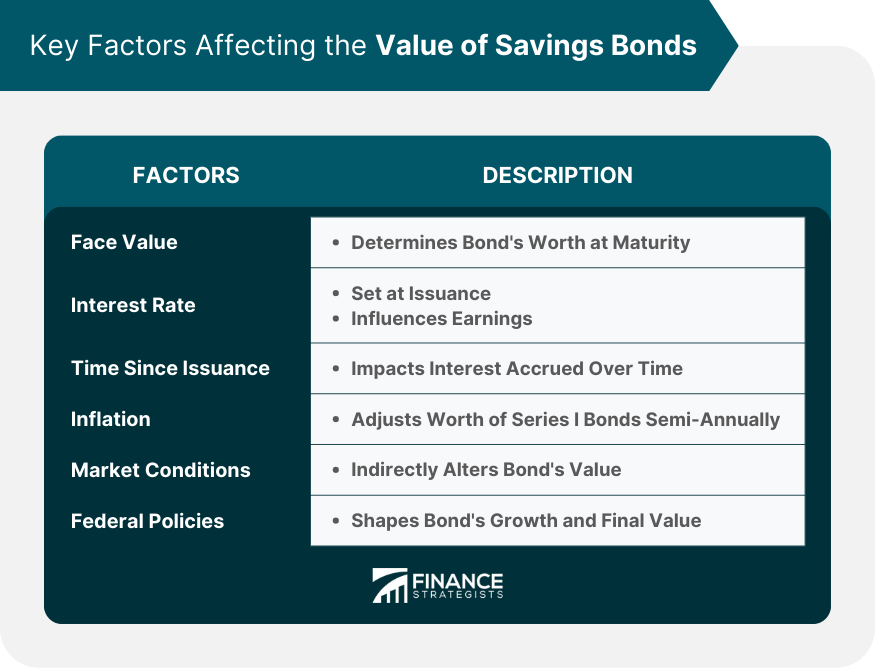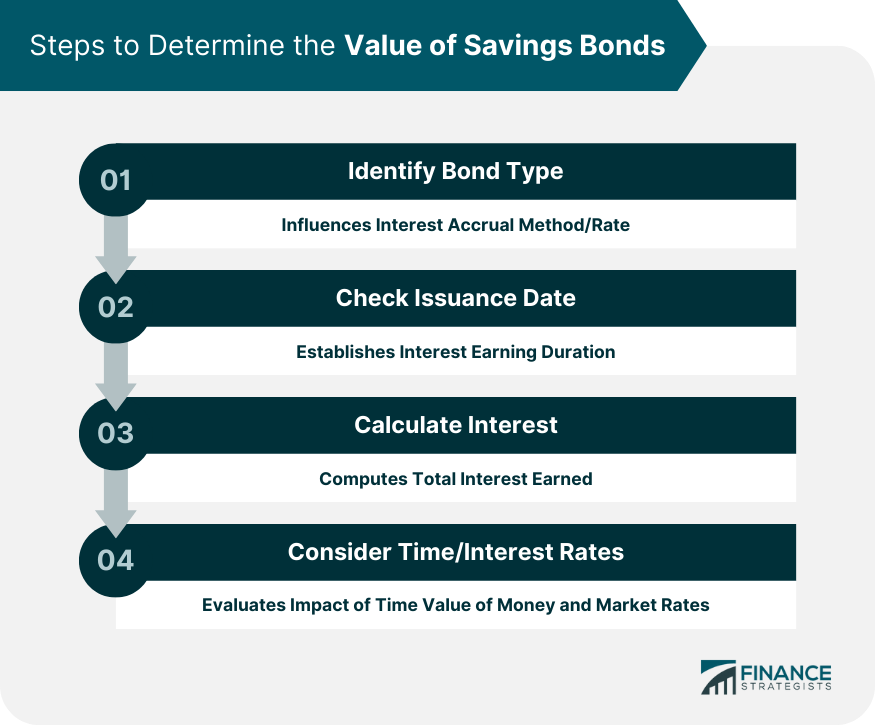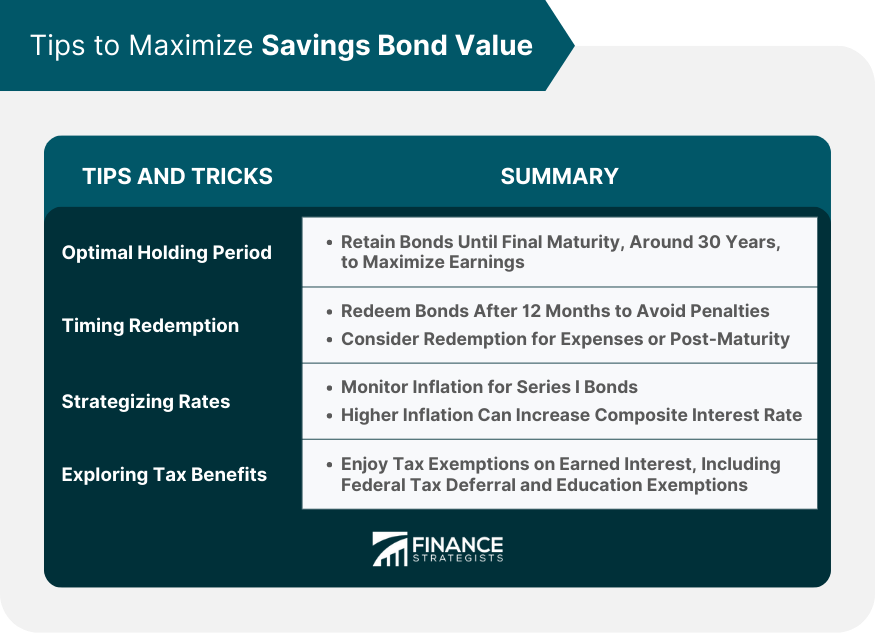Savings bonds, issued by the U.S. Treasury, represent a safe and secure long-term investment. Each bond's value is influenced by its series (E, EE, I, or others), denomination, and issue date. The interest rate, set and periodically adjusted by the Treasury, also significantly impacts a bond's growth. Savings bonds mature over a span of 20 to 30 years and stop accruing interest after their maturity date. Therefore, knowing when your bonds reach maturity is crucial to maximize their value. An effective method to determine the current worth of savings bonds involves using online calculators, such as the one provided by the TreasuryDirect website. By entering relevant bond details, you can obtain an accurate estimation of your bond's current value. Maintaining awareness of your bond values aids in making informed decisions about holding, redeeming, or investing further in savings bonds. The process, despite appearing complex, is actually straightforward, enabling every investor to proficiently manage their bond portfolio. The value of a savings bond doesn't remain static; instead, it fluctuates based on several factors. Understanding these elements can provide valuable insights into your investment: Face Value: This is the amount the bond is worth at maturity. Bonds are typically purchased for half of their face value. Interest Rate: The rate at which a bond earns interest is crucial in determining its worth. This rate is set by the Treasury at the time of issuance and can vary over time. Time Since Issuance: Savings bonds earn interest over a certain period, typically 20 to 30 years. The longer a bond has been held, the more interest it accrues, thus increasing its value. Inflation: For Series I bonds, the value is adjusted semi-annually based on changes in the inflation rate, which can increase or decrease the bond's worth. Market Conditions: Although savings bonds are a relatively stable investment, broader economic conditions can indirectly impact their value. Federal Policies: The U.S. Treasury Department's policies, such as changes in interest rates or taxation rules, can affect the growth and final value of savings bonds. The face value refers to the amount that the bond will be worth when it reaches maturity. This is the amount the U.S. Treasury, as the issuer of the bond, promises to pay to the holder at the end of the bond's term. If we take Series EE bonds as an example, you buy them for half of their face value. In contrast, for Series I bonds, you pay the same amount as the face value at the time of purchase. The face value plays a central role in figuring out a bond's value. It serves as the foundation for computing the interest that the bond will accrue. The Treasury adds this interest to your initial investment, which causes the overall worth of the bond to grow as time goes on. Hence, understanding the face value is vital to estimating what your savings bond will be worth in the future. The time value of money (TVM) is a basic principle in finance that suggests money you have right now is more valuable than the same amount of money in the future. This is because money has the potential to earn more money over time - think interest in a bank account or returns on an investment. TVM plays a significant role in savings bonds valuation. As a bond earns interest over its life, its value increases - that's the potential earning capacity in action. If you hold a bond for a longer period, it continues to accrue and compound interest, thereby enhancing its value. This concept aligns with TVM, emphasizing that money (in this case, the savings bond) can generate more value over time. Interest rates hold a significant sway in determining the value of savings bonds. The rate at which interest is compounded on your bond dictates its future worth. Simply put, the higher the interest rate, the more interest your bond accumulates, leading to an increased bond value over time. Interest rates are not constant; they shift according to economic climates. For instance, if you have a bond with a fixed interest rate and the market interest rates surge, your bond's value might depreciate. This is because it's accruing less interest compared to newly minted bonds in the market. Conversely, if market interest rates take a dip, your bond may appreciate in value as it's earning more interest compared to new bonds in circulation. Determining the value of your savings bond begins with identifying its type – it could be either Series EE or Series I. The type influences the method and rate at which interest is accrued, hence affecting the bond's value. The issuance date determines how long the bond has earned interest and can help establish its current value. Using the bond's interest rate and the duration it has been accruing interest, you can compute the total interest earned. Adding this to your initial investment provides the current value of the bond. Remember the principles of the time value of money. The longer the bond is held, the higher its value due to interest compounding. However, also consider current market interest rates, as these may affect the bond's value. The U.S. Treasury offers a free online tool for calculating the value of savings bonds. Simply input your bond's series, denomination, and issue date, and the calculator estimates the bond's current worth. In addition to the calculator, the U.S. Treasury also provides Savings Bond Value Tables. These tables, downloadable as PDFs, detail the value of bonds for each month since their issuance, providing a snapshot of a bond's growth over time. Financial advisors and professionals are invaluable resources when it comes to bond valuation. They possess the expertise to accurately determine the value of savings bonds. Furthermore, they can provide guidance on decisions related to your bonds, such as whether to hold or redeem, based on your financial goals and market conditions. One of the best strategies to maximize the value of your savings bonds is to retain them until they achieve final maturity, when they cease to earn interest. This period typically spans 30 years from the issuance date. Holding onto your bonds for this duration ensures you're capitalizing on the full earning potential. Although savings bonds can be redeemed any time after 12 months from the date of issuance, doing so within the first five years can incur a penalty, usually the last three months of earned interest. The optimal time to redeem your bonds is either when you require the funds for a significant expense or when the bonds have stopped accruing interest post-maturity. For Series I bonds, keep an eye on inflation rates as they directly influence the bond's composite interest rate. During periods of high inflation, the interest on these bonds could increase, thus raising their value. The interest earned on savings bonds is exempt from state and local taxes and federal tax can be deferred until redemption or final maturity. If used for qualified educational expenses, the interest may be entirely exempt from federal tax, further enhancing the value of your investment. The value of savings bonds is influenced by a myriad of factors, such as their type, issuance date, interest rates, time value, inflation, market conditions, and changes in federal policy. Understanding how these elements intertwine to shape your bonds' value can empower you to optimize their growth potential and safeguard your financial future. Moreover, recognizing the significance of savings bonds in your investment portfolio is paramount. They offer a safe and stable investment option, diversifying your portfolio and mitigating risks associated with more volatile investments. Additionally, savings bonds offer tax advantages that further enhance their appeal and potential returns. Tools and resources like the U.S. Treasury's Savings Bond Calculator and consulting with financial advisors can further aid in accurately determining the value of your savings bonds. A comprehensive understanding of your savings bonds' value is a strategic move that bolsters financial security, underpins sound investment decisions, and contributes to long-term wealth building. Regularly monitoring and understanding the value of your savings bonds is a worthwhile commitment in your journey towards achieving financial wellbeing.Overview of Savings Bonds
Factors Affecting the Value of Savings Bonds

Face Value of Savings Bonds
Time Value and Savings Bonds
Interest Rates of Savings Bonds
How to Determine the Value of Savings Bonds
Identify the Type of Bond
Check the Issuance Date
Calculate the Accumulated Interest
Factor in Time and Interest Rates

Tools and Resources to Determine the Value of Savings Bonds
US Treasury's Savings Bond Calculator
Savings Bond Value Tables
Financial Advisors and Professionals
Tips and Tricks to Maximize the Value of Savings Bonds
Optimal Holding Period for Savings Bonds
Timing Your Savings Bonds Redemption
Strategizing Interest Rates and Inflation
Exploring Tax Advantages

Conclusion
How to Determine the Value of Savings Bonds FAQs
The key steps involve identifying the bond type (Series EE or I), checking the issuance date, and calculating the interest accumulated based on the bond's interest rate and the duration it has been earning interest.
The value of savings bonds increases over time due to the concept of the time value of money, where a dollar today is worth more than a dollar in the future because of its potential earning capacity.
Tools such as the U.S. Treasury's Savings Bond Calculator and advice from financial advisors can assist in learning how to determine the value of savings bonds.
Understanding how to determine the value of savings bonds is crucial for financial planning as it provides insights into your investment's growth, enabling informed decisions about when to cash them in or whether to let them continue to earn interest.
The interest rate directly influences the value of savings bonds as it determines the amount of interest the bond earns over time, and fluctuating market interest rates can impact the bond's current market value.
True Tamplin is a published author, public speaker, CEO of UpDigital, and founder of Finance Strategists.
True is a Certified Educator in Personal Finance (CEPF®), author of The Handy Financial Ratios Guide, a member of the Society for Advancing Business Editing and Writing, contributes to his financial education site, Finance Strategists, and has spoken to various financial communities such as the CFA Institute, as well as university students like his Alma mater, Biola University, where he received a bachelor of science in business and data analytics.
To learn more about True, visit his personal website or view his author profiles on Amazon, Nasdaq and Forbes.











